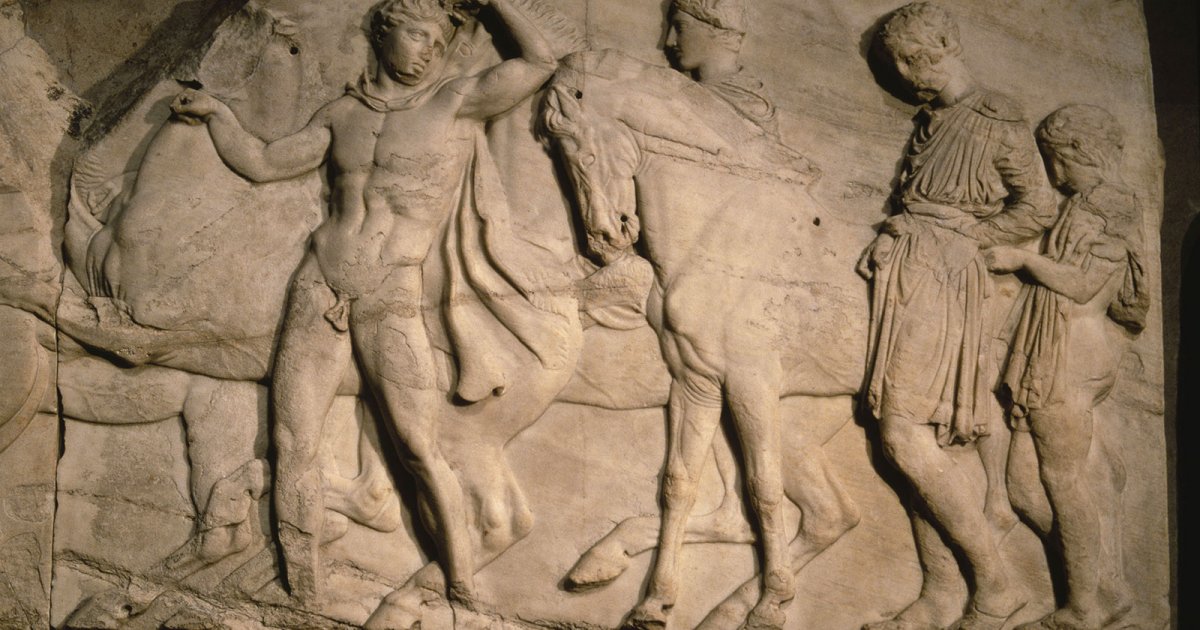BRITISH MUSEUM, Parthenon Marble Pediments
 Language: English / USA
Language: English / USA
The display of the Eastern pediment culminates with the depiction of the "Birth of Athena from the head of Zeus". This grandiose sculptural group lets you appreciate all of Phidias' mastery in connecting each figure with its neighbor, yet also letting each one shine in its individual glory. The fullness of the bodies' shapes is accompanied by a new sense for human beauty that can be seen in the extreme naturalness of the poses. The knowledge of anatomy paved the way for a soft and expressive language, which will eventually be referred to as "classical".
As I mentioned, inserting figures in the angles of the triangular pediment that were in line with the scene as a whole wasn't very easy. The problem was brilliantly solved in the eastern pediment with the insertion of a chariot being pulled out of the sea by the four horses of Helios, the sun, on the left, and the chariot of Selene, the moon, diving back into the sea on the left. Thus the scene also gained a narrative coherence, with a beginning, development, and conclusion.
Admire the lively rotating motion of the horse's head disappearing into the sea, which suggests the passage of time. The rhythm of the nature and story makes the myth come alive, brings it into the present, and gives it a human aspect made of flesh, feelings, and beauty.
The utmost quality of the pediment's sculptures confirms Phidias' personal touch. For example, look at the horse's head: it shows how a merely accurate anatomical study, when combined with outstanding artistic skill, can produce something so splendid.
The western pediment of the Parthenon was on the temple's rear, but was the first thing seen by those entering the Acropolis. You can admire the myth of the battle between two divinities for the region's domination. This mythological drama, in which the young Athena, goddess of wisdom, defeats the old Poseidon, god of the sea, is also the symbol of the city's political renewal. The two deities were depicted right in the center, but were unfortunately lost in time, like most of the rest. One of the few surviving elements is the beautiful figure of Iris, the divine messenger who descends from the sky towards the Acropolis while the wind outlines her stupendous body and makes it visible under her lightweight, adherent tunic.
FUN FACT: doubts regarding the legitimacy of the initiative to remove the marbles from the Parthenon began almost immediately. Lord Byron, who was English and lived in those years, defined it as an act of vandalism. And even today, two centuries later, UNESCO and some Hollywood actors including George Clooney and Matt Damon loudly ask for the marbles to be returned to Greece.



